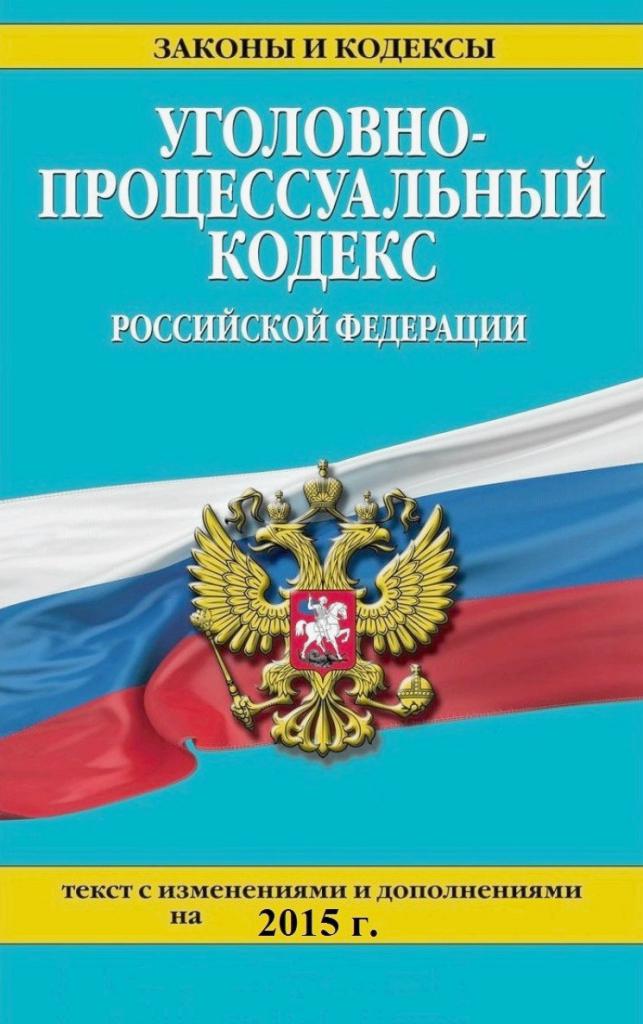The criminal procedure legislation establishes the procedure for joining and separating criminal cases. Its presence allows you to significantly speed up production, to ensure the adoption of reasonable and legal decisions. Let us consider in more detail the grounds and procedure for combining criminal cases.

General information
The combination of criminal cases in one proceeding is carried out in relation to:
- One subject involved in several acts.
- Several citizens who are accomplices of one / several attacks.
- Persons accused of not previously promised concealment of acts investigated in the framework of the case.
The specified list is present in part 1 of the article of the CPC. In the second part of this norm, another basis for combining criminal cases is enshrined. It is carried out in situations where the subject to be attracted to the status of the accused has not been established, however, the investigation has sufficient evidence of several crimes committed by one citizen or group of persons.
The decision on combining criminal cases is made by the prosecutor.
The duration of the proceedings is determined in the case, the investigation of which takes longer than the rest. When combining criminal cases, the duration of the investigation for other crimes is absorbed by the longest period. Additionally, they are not taken into account. The corresponding provision is fixed in 4 part 153 of the article of the CPC.

Combining Criminal Cases: Features
This institution, enshrined in criminal procedure legislation, ensures the objectivity, completeness and comprehensiveness of the investigation. The authorized body has the right (but should not in all cases) combine several (two or more) cases in one. Of course, there must be a basis for this, established by Article 153 of the Code.
The completeness, objectivity, comprehensiveness of the investigation should not contradict other criminal principles. In particular, the exercise by the accused of the right to defense is possible exclusively from a specific, individual charge. In the case of a continuous, endless study of the criminal past, a citizen would be deprived of this right.
The desire to disclose all acts involving all subjects is not consistent with the right to be tried without undue delay. An unreasonable combination of criminal cases can lead to a delay in the process, violation of the legal deadlines for not only the investigation, but also the legal proceedings, as well as the detention of a citizen.
Modern view of the problem
It must be said that in the current Code of Criminal Procedure, in comparison with the Code of the RSFSR, the priorities for combining criminal cases have slightly changed. In the previous legislation, it was the rule, and in modern - an exception to the rule.

This is due to the fact that the current CPC does not use the principle of objective truth. In modern legislation, the institution of returning materials for additional investigation by the court has been abolished, and the procedure for combining criminal cases has been complicated.
Based on the provisions of the Code, the obligation to establish the truth rests with the prosecutor and the investigating authorities. Accordingly, they are vested with the right to join matters. For the fact that the materials will not be combined, the CPC does not provide for any liability. On the contrary, an unreasonable combination of criminal cases may lead to the recognition of evidence as inadmissible and, therefore, the annulment of the sentence.
Specificity of evidence
Usually, in order to combine criminal cases, confirmation of the involvement of persons in crimes is necessary.In this regard, the merging of materials is carried out after the issuance of the decision on the involvement of citizens as defendants. As an exception, a connection is possible in relation to suspected and even unidentified subjects.
However, the presumption of innocence should not be forgotten. According to this principle, a person cannot be considered guilty until the sentence takes effect. In this regard, according to some experts, when combining cases, it is incorrect to talk about the involvement of the accused or (even more so) the suspect in the commission of the crime, as is done in part 1 of article 153 of the Code of Criminal Procedure. Experts believe that the provisions of the norm should be interpreted restrictively. In particular, experts suggest not talking about the commission of crimes by the subject, but about the presence of the procedural status of a suspect / accused in several cases.
Nuances
The second part of the norm refers to the possibility of combining materials collected in relation to unidentified subjects, if there is evidence of an act committed by the same citizen (or by the same persons). As evidence can serve as objects indicating a specific method of committing an assault. For example, banknotes belonging to one batch of counterfeit money can be revealed.
The combination of counterclaims into a single proceeding as part of a private prosecution case may be a special type of combination of materials.

Limitations
The combination of cases on the grounds not enshrined in Article 153 is not allowed. For example, it is forbidden to combine criminal consequences with commonality, negligence of actions of persons who were not accomplices, etc.
The key condition for the connection is the presence of instituted proceedings (crimes under investigation). The following provisions follow from this:
- It is impossible to combine cases that are terminated and suspended without their resumption or cancellation of the relevant resolution.
- If the investigation reveals a new act (according to which the original case was not opened), it is necessary under the rules of article 146 of the Code of Criminal Procedure to make a decision to initiate a case, and then combine them into one proceeding.
- If prosecution was initially initiated against a specific subject, and partners were identified during the investigation, a case must also be brought against those individuals before joining.
Important point
An investigation of the act without initiating proceedings is considered a significant violation of the criminal procedure standards. It will be recognized as not complying with the law, even if it is masked by a union or a decision to open another production.
For example, a case was instituted against a subject who violated the procedure for carrying weapons. As part of this production, the fault of this citizen in other acts is established. After that, a person is charged with a charge that is not related to the circumstance on the basis of which the case was initiated. This practice does not comply with the letter of the law.

Features of the decision
To connect cases, the prosecutor must adopt the appropriate act. The decision may be made at the request of the inquiry officer or investigator.
The issue regarding the joining of one case to another can also be resolved with the consent to start production under the rules of article 146 of the Code of Criminal Procedure.
The timing
The rules for their calculation are fixed in 4 part 153 of the article. The duration of a person’s detention is regulated by 94, 100 and 109 Codex standards.
The investigation period is equal to the time of the production of the case in which it is the largest. In this case, the excitation date does not matter.
Rules 4 of part 153 of the article ensure the creation of conditions for unlawful actions with a time limit for the investigation. For example, according to operational information, a citizen committed three thefts. But the investigator does not open all the cases at the same time or one with three episodes.First, he initiates proceedings for the first crime, and after 2 months - he suspends it. Immediately on this day, the investigator opens a case for the second episode. Then also pauses it. After that, he performs the same actions in relation to the third theft. Upon expiration of the last crime, all cases are joined, and the investigation period is set at 2 months. In fact, six months have already been spent on the prosecution.

A similar procedure for calculating the statute of limitations established by the instructions of the Prosecutor General of 1996 (as amended in 1999) was declared invalid and not subject to application by decision of the Supreme Court of 1999.
Additionally
The rules enshrined in Article 153 of the Code of Criminal Procedure can also be used when combining cases as part of a public charge of legal proceedings. In part 7 31 of the norms of the Code, allocation is expressly allowed, and in article 33, connection is not excluded. The unification of affairs, in fact, in this case will be the creation of one production from several, open separately.
Quite often, the investigator during the performance of operational-search measures for one act reveals signs of other crimes committed by the accused / suspects. But in this case there are no grounds for opening new affairs and combining them into one. In such a situation, an investigation within the framework of the existing proceedings and other newly established episodes of the unlawful activity of one subject is permissible.
Conclusion
The combination of cases on charges of the subject of involvement in several crimes in one proceeding provides an opportunity for the investigator, and subsequently the court, to conduct a full and comprehensive assessment of the scope and nature of the citizen’s illegal actions. Accordingly, this guarantees a fair sentence to the perpetrator.
The positive point in this case is that in the case of the investigation of several acts involving the same citizen, within the framework of the same proceedings there is no need to collect information about his personality and other characterizing materials each time. The employee conducting the investigation can quickly establish contact with the accused / suspect, create more favorable conditions for identifying and studying his connections, circle of contacts, likely accomplices, patrons. All these circumstances, of course, favorably influence the course of the investigation not only of the first, but also of other crimes to which one citizen is involved.

Subsequently, the affairs united in one proceeding acquire a certain structure, orderliness. This greatly facilitates the trial. In this case, the evidence base is replenished only with the necessary materials. The case does not duplicate previously identified information, established circumstances. Due to this, the court gets the opportunity to fully assess the objective side of the crime and make a proper decision.
